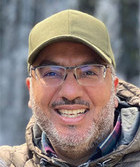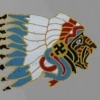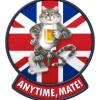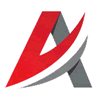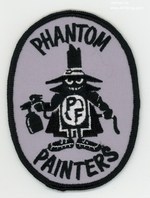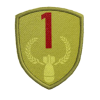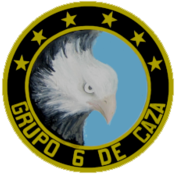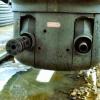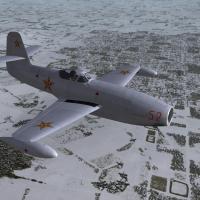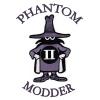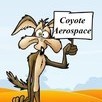Leaderboard
Popular Content
Showing most liked content on 03/31/2022 in all areas
-
10 points
-
9 pointsYes, this workaround is required because the author of the LODViewer was to lazy to implement this feature into the tool. Maybe he will find some time (and motivation) in the future .
-
6 points
-
5 points
-
5 pointsAnarchy one for the Uk ! Awesome work ...please upload if possible ? Mandatory screenie , testing new AT802 "Armadillo" skins
-
5 points
-
3 points
-
3 points
-
2 pointsHello everyone, this will be not only my first journal entry for DiD IV, but it will also be my first EVER DiD campaign. I am looking forward to reading through everyone's characters and getting to know them. I am a bit behind so will be playing catch up in the coming days. Sergeant Thomas Alfred Watson, No. 12 Squadron RFC Part 1: March 25th, 1916 Thomas was jolted awake by his driver. The nearby idling of multiple RAF V12 engines reverberated throughout the adjacent row of Bessonneau hangars to the right of the Crossley. Thomas exited the passenger seat in a daze, still half asleep from traversing the winding back roads of the French countryside for nearly an hour. Before him stood the row of olive drab Bessonneau hangars that lead up to a somewhat dilapidated barracks with various NCOs hanging around out front. Thomas stood there for a moment, hesitant on where exactly to report. Suddenly, the Crossley driver reassuringly called out to Thomas, “I hear the flying life isn’t such a bad deal sir, especially considering your previous circumstances.” The various daily images from the mud of Flanders flashed through Thomas’ mind, which he quickly repressed while formulating a polite reply to the driver. “Thank you Corporal, try not to hit too many potholes on your way out of here.” “Will do sir, good luck.” Thomas walked along the backside of the hangars that led up to the nearby barracks, glimpsing a different BE2c every time a gap appeared between the pairs of adjoining hangars. Unlike the quirks at Hendon Aerodrome back home, these machines had a single Lewis gun attached to the observer’s seat via a strange mount. Thomas approached another Sergeant casually leaning on the rotted wood slat wall of the Sergeant’s mess. “Hello Sergeant, I’m the new arrival pilot, Sergeant Watson. Could you perhaps direct me towards the CO’s office?” “You’re telling me you missed it on the way in? Surely you didn’t mistake this makeshift chicken coop behind me here as the CO’s office?” Thomas, not wanting to admit that he had slept through the approach up to the aerodrome replied, “Ahh yes, I was quite preoccupied with observing the quirks idling up on the field as we approached I suppose. Absolutely beautiful machines they are!” “I am quite unsure why you would be so keenly interested in such a pig of a machine in all honesty? Ahh well, one trip over the Hun lines will change your mind for good. Anyhow Sergeant Watson, the CO’s office is just behind the Sergeants mess here, adjacent to it you will also find the A through C flight huts.” “Very good, thank you Sergeant…?” “Lawrence Pope” “Right then, I shall see you around Sergeant Pope.” Thomas made his way around the Sergeant’s mess, nearly running into a gaggle of chickens on the backside of the structure. Evidently the Sergeant wasn’t being completely ironic when referring to the unkempt state of the Sergeant’s mess. Thomas approached the obviously recently erected CO hut stood in front of him. In fact, the adjacent A, B, and C flight Armstrong huts were all in pristine condition as well. Thomas gave a stern knock on the CO office door, the nameplate read “Major Vance.” “Yes, come in” answered a muffled but confident voice from behind the door. Thomas entered the spacious and well decorated office and immediately saluted and then stood to attention. “Oh, you must be Sergeant Watson, splendid! Pleasure to meet you, Major Trent Vance Commanding Officer. I was just looking at your file before you arrived actually. Only one crash while training at Hendon and a total of 25 hours flying time? Very impressive indeed.” “Yes sir, thank you sir. The quirk engine cut out on takeoff, and thanks to my flight instructor’s incessant remarks regarding engine failures, I made sure specifically to not attempt turning back to the aerodrome. Unfortunately that also drove me right into the tree line just two hundred meters in front.” “Hmm I see, quick thinking on your part while instinctively reacting to training, that is quite rare in such a new pilot.” Thomas eyed the distinctive German Iron Cross contrasted against a pure white canvas background hung up on the wall directly behind the Major. It seemed to have been cut from a German machine and great care was clearly taken when removing the souvenir from the fuselage. Major Vance noticed Thomas’ gaze hovering over the canvas trophy behind the CO’s desk. “Ahh that thing? My first confirmed victory, shared between myself and my observer Lieutenant Robert. An Aviatik we caught out over Arras on a return trip from Hunland performing photo reconnaissance. The poor Boche hadn’t the faintest idea what had occurred until it was far too late. I managed to sneak in underneath the enemy machine’s tail as we were returning heading west. Once Robert and I were a good thirty meters out in front and underneath the Hun’s nose, I pitched down slightly as to give a proper firing window for my observer. Lieutenant Robert emptied the entire drum into the machine for good measure, and the old Hun was sent out of control, dead leaf. He was seen to crash just west of Arras where the mud meets the green. Quite an easy confirmation given the plethora of nearby archie chaps. Robert and I landed near the wreckage, or what was left of it. Quite an awful sight indeed, fortunately enough of the machine remained intact to preserve the cross.” “Wonderful work sir, congratulations. How many victories is that in total for you and your observer then?” “Oh just the one so far I’m afraid, but that soon shall change I am sure of it. Now, seeing as how you seem quite a capable pilot, you’re to come out with us on the big show tomorrow.” “…Sir?” “There is a Hun railyard just across the lines directly east of Arras that is dying to become acquainted with our good friend Mr. Cooper. Those damned boxcars have been moving shells up to German Artillery positions which have been cutting our boys to ribbons lately in our sector. Both A and B flights will be heading over the lines tomorrow at noon, and you my friend have been assigned to B flight.” “Sir, would it not be wiser to allow me time to acclimate with the surrounding landmarks and tour the front from the safety of our own lines given that I have just arrived? “There will be time for that rest assured my boy, but we will have a gaggle of ten quirks invading Germany tomorrow so not to worry. Oh, by the way have you met your observer yet? Lieutenant Douglas Carwin?” “No sir, I cannot say I have.” “Well go and have a chat with him in the B flight hut, I’m sure he will enlighten you about some of the finer details of penetrating Hunland for when we head over tomorrow.” “Uhh… yes sir understood.” Thomas now had a heavy lump in the pit of his stomach as he exited the Major’s office. Crossing into enemy lines on his first ever sortie? Surely this Major must be absolutely mad. His only solace was knowing that his efforts would aid those still trapped in the mud holes and rat nests of the Flander’s trenches, a helpless position Thomas was all too familiar with. Thomas crossed the threshold of the Armstrong hut assigned to B flight. A row of cots on each side of the hut was accompanied by a single chest placed at the mattress foot board for storing personal belongings. A Lieutenant pilot was knelt over one of the chests, retrieving various belongings from the container. As Thomas walked towards the chest he noticed the Lieutenant holding a collection of personal trinkets, a couple pairs of clothes, as well as a family photograph of a son and his parents who stood proudly behind the young man. “Hello sir, Sergeant Watson reporting for B flight. Major Vance requested that I report to Lieutenant Carwin, I am to be his pilot.” “Well you’ve found him; he is in somewhat dreadful spirits at the moment unfortunately,” Carwin remarked as he stared at the young son in the family portrait. “I see sir, a friend of yours I take it?” “Yes, Sergeant Jake Wilbert, the best reconnaissance pilot I have ever had the privilege to fly with, and a loyal friend.” “I am most sorry to hear that sir, may I help you with carrying some of those items?” “No, that is quite all right thank you Sergeant. Why don’t you place your belongings in the container here that was occupied by Wilbert previously. I will be back shortly; I would like to hear about your meeting with Major Vance, but I need to ship these items back to his family.” Carwin started towards the hut door, but Thomas worryingly called out to him first. “Yes, that was one topic I had wished to bring up with you anyway sir. Major Vance believes it necessary to have me along on the bombing raid of the Hun rail yard tomorrow at noon despite it being my first ever sortie.” Carwin stopped dead in his tracks with his back faced to Thomas. He paused for a moment, and then placed Wilbert’s belongings carefully and methodically on the cot next to him. Carwin quickly snapped around to face Thomas, then walked right up to him and grabbed him by both shoulders with an intense vice grip. His piercing blue eyes stared directly into Thomas with a gaze of genuine concern and absolute immediacy. “Now listen here Watson, if at any moment during tomorrow’s sortie I give you a signal to turn tail and head home west, you do it without any questioning, got it?” Carwin’s eyes started to subtly well up as his vice grip continued to tighten. “I won’t lose another pilot to the blasted Hun, especially not one fresh from pilot training on his first mission. Ever since the Major scored a damned victory over that Aviatik last month he believes the squadron morale is adequately prepared to continue scoring more victories.” Thomas, now somewhat visibly shaken, inquired about the Hun machines found in this sector. “Sir, are there any notable differences between our machines and the Aviatiks that give them a particular advantage?” “Aviatiks? Nothing noteworthy, in fact we tend to leave one another to our reconnaissance duties most of the time. It’s those God forsaken Fokker monoplanes that are murdering our poor quirks. They have us bested in every performance parameter imaginable. They can out climb, out turn, and out dive us in any situation. Also, due to their forward firing machine gun through the propeller arc, their armament is vastly superior as well. The best bet a BE has against a Fokker is hope to God we identify the Hun early on and dive west before they have a chance to notice us. Carwin could begin to tell he was frightening Thomas by the nervous look in his eyes, causing Carwin to release his grasp on Thomas’ shoulders. “Sergeant, I tell you all this not to get the wind up, but to prepare you for what we are up against. For now, grab some food from the mess, and your cot is to be the one that Wilbert occupied previously.” “Okay, thank you sir… Once again, I am sorry about Sergeant Wilbert.” “Thank you Sergeant… I will be back in a minute.” “…Uhm… Sir? One more thing if I may.” Carwin turned around once again to face Thomas. “About Sergeant Wilbert…? Do you instill this concern in me for Fokkers because of what happened to him? I mean… was it a Fokker monoplane that got him?” Carwin resumed his stare at Thomas for another moment, and then quickly veered away just as Thomas noticed his lips beginning to quiver. Carwin walked out of the hut door without uttering a word.
-
2 points
-
2 pointsSome "new" E's I'm working on...... Rebuilt/remapped model, new SUU-23/A gunpod also, not up to Ravenclaw standards but better than stock......for me anyway. No decals on any of these birds.....just because I cant be bothered to make em
-
1 point
Version 1.0.0
1,025 downloads
Banidos TA 50 (SU-57) This is a model of the prototype of the TA 50 (SU 57) created by AleDucat, the model is beta, this means that it has not been tested enough, it may have missing parts and some inconveniences, (none affects anything in the simulator) the installation method is the standard one, copy the contents of each folder into the corresponding folders in your simulator installation. The flight model is super unstable, this means that you can perform cobra, super cobra and rotate like a juggler's baton. if you press the vectoring key (as used on helicopters and harriers) the model will deploy the refueling zone and become more stable. For animation reasons, the cockpit is unfolded with the key to unfold the mooring hook. The center bays deploy automatically when firing a radar guidance missile. In order to engage and fire infrared missiles housed in the wing root wells, you must open them with the key that corresponds to the openings of common wells. the model is the prototype, remove the pitot t antennas that the working model does not bring from the ini files. I hope you enjoy. This folder contains a 3d model of the SU-57, a 3d model of the cockpit, a 3d model of the pilot's seat and optronic seeker, 3 skins with the corresponding decals, and several engine sound files. 3d model :AleDucat textures: Torno excuse my bad english this was translated with google translator. -
1 pointHello everyone, I am sharing what I am working on with the team. It is a slow project because we do it for the hobby. We are flowing along with it, and there is no ETA. Initially, I worked on Dhimar and Paran expansion pack without much research, which led me to do a project that made no sense. That was an opportunity for me to learn how to do it properly, especially in a semi-realistic way that makes sense. I decided to discontinue Dhimar and Paran expansion project because I didn't want to change the stories written by TW. Therefore, I want to honor his work. Thank the community and friends for inspiring me to work on an entirely new fictional nation that I can envision and bring into SF2. A friend of mine recommended I look into the Africa map, where the imaginary nations of Saad and Zafir come in. What took the longest time was actual research about the nations around the horn of Africa and the Arabian Peninsula and the ancient civilization around that area. The research on the language, cultures, and history was also involved. It taught me many new things, which opened me to Africa and the Arab world. This is how Saad and Zafir get an enriched history and depths with the cultures, languages, and where they come from. This led me from just making SF2 mods into writing a book. I never thought I would do it, yet I am doing it as a hobby. Then it came to me; this book is not just for SF2; it can be used for any simulation. It taught me how to be creative with the stories, including the graphic designs (flags, insignia, roundel, pilot badges, and other materials). After finishing the short history series about Saad and Zafir's ancestors, I can start focusing on finding the right aircraft for Saad and Zafir. It is intended that Saad and Zafir are truly unique to each other and the world of SF2. It won't be another classic "USA aircraft vs. Soviets Aircraft." Instead, they use various aircraft tied to Saad and Zafir history with connections to certain nations from Europe to the Middle East to Asia. They will still use some of the United States and Soviets aircraft, though. My friend has been a great teacher who taught me a lot about the military system and how they do things. I can make Saad and Zafir military semi-realistic with it, especially when being fictional nations. I intend to bridge the alternative world (SFAW) with this world in balanced ways. By the way, here is the information about the SFAW project: I will give you the brief background about Saad and Zafir. NOTE: I am NOT an expert with the language of Tigrinya. I am still looking for someone who knows the Tigrinya languages. I find them to be very interesting. It is intended that the language of Tigrinya for Saad is one of the native languages. That way, Saad can be fully immersive in the book and SF2. ሳድ (Saad) - (1920 – Present) الظافر (Zafir) - (1930 – Present) FAQs Cheers!
-
1 pointBeen ill and not been around hence the inaction.... ok now but busy elsewhere,though I will go through stuff ive got near done and try get some out...where poss...if not I will offer up stuff for peeps to modify for you all..( by that I mean model thats done but may need ini`s etc) I wont be on every day but will try pop in more and more when able.. cheers guys and keep safe Russ
-
1 pointVoils is a short version of voilure which is French for aerofoil. So I guess the left button jettisons the fuselage stores, the middle button jettisons the wing stores and the right button jettisons the fuel tanks? Dels
-
1 pointgood logic. but if the Raptor or Panther were to visually see a hostile Typhoon IRL, something has gone astray. the general idea these days is to zap them BVR and yes, we have heard this tune before. but since the late 90s we've had the instruments to play it better. no so much in Vietnam, a few years after the BVR song was first written (and the usual goto for arguing against BVR engagements) finally, with exception to the smaller users that will go to all F-35 fleets, its meant to be an attack aircraft first, fighter second. the F-22 was built to be a fighter first, and had to take on some attack roles second to justify costs on the ones that were built. comparing the dogfighting abilty of a F-35 is like comparing the dogfight abilty of an A-7 to a F-4. yeah it can do it in the right hands and circumstanses. but it wasnt really designed to do that, just protect itself on the way to the main target.
-
1 point
-
1 pointDear Friends, Today’s Developer Diary showcases our upcoming and awesome Mosquito FB Mk.VI. Isn’t she a beauty? Our “Wooden Wonder” as it was called, is in the later stages of development and we have already completed some of her skins that will be included. Work on her flight model has begun and work on finishing her cockpit continues. We are doing all we can to get her into your hangars just as soon as possible. We know she is a hotly anticipated plane and the wait is difficult, but please have patience, we think she will be worth it! As you know, we frequently re-visit some of our older technology and try to improve it. A recent example is our sky, clouds and lighting, which we still hope to improve further in time. Recently, we finally had some time to re-visit our technology that affects the appearance of our Propeller Disk. Our current prop disk has some issues that we wanted to rectify including how it seems to disappear at certain angles. We also wanted to make its appearance more realistic and dynamic. We think we achieved this and here are a couple screens to help demonstrate. It’s hard to get the whole effect in still images or even a video, but we wanted to make you aware of this development. We think you’ll enjoy it once it’s in-game. Enjoy! The Sturmovik Team
-
1 pointHello Everyone, A quick update on all that we are working on at the moment. We are preparing version 4.703 for release for middle of next week. Assuming, of course, no last-minute show stoppers arise. Update 4.703 will include three large planes – the JU 88 C-6, Gotha G.V. and Handley Page O/400. This brings some heavier metal to BON and some err… heavier lumber to FC2 I guess you could say. The Gotha, as it was in ROF is a handful to fly. See if you can master it! The Sopwith Tripe is also entering its later stage of development and will be in our next update. 4.703 also includes 40+ smaller tweaks and improvements including items such as: - New sky technology and improvements to lighting. Should see a reduction in overall blue tint. - Improvements to the appearance and lighting of snowy landscapes. - The position of heavenly bodies now depends not only on time and date, but also on geographic coordinates (including when moving around the map). - Quick Mission GUI now includes the ability to set any time of day with clues as to Sunrise, Daylight, Sunset and Night-time scenes. - AI with mixed cannon and machine gun armaments shoot more accurately. - Fix to the landing lights that are visible from far away issue. - Added the Ju-88 C-6 to Stalingrad Career mode with III./KG76 and for the Battle of Kuban 7.(Eis)/KG 51 and 9./KG 55. - Squadron II./JG 3 for Pilot Career Battle of Stalingrad moved from AI to player controllable - Squadron II./KG 76 for pilot career Battle of Moscow and Battle of Stalingrad moved from AI to player controllable. After much research and bug chasing, our engineers discovered clear issues with our modeling of some aspects of the Bf-109 airframe, which in some situations made their performance quite unrealistic. So, we have made some changes to most Bf-109 variants relating to the over-modeling of propeller performance and aerodynamics. Version 4.703 will include the following changes. - On all Bf-109 aircraft (except for the E-7) the aerodynamic characteristics of the propeller have been changed to eliminate the unrealistic behavior of the aircraft in the wake of the propeller and the possibility of "hovering on the propeller". The airframe aerodynamics of these aircraft has also been corrected so that the maximum speed, rate of climb, turn time, and acceleration time better corresponded to the reference values. - On all Bf-109 aircraft (except for the E-7) the effectiveness of the ailerons at high speeds has been changed (increased) (the "clamping" of the ailerons has been reduced at speeds over 400 km/h) The goal was to be more accurate overall, so in some cases speeds may be bit lower at sea level, but higher at rated altitudes and climb-rate may be a bit slower. But in some cases, turns may be quicker, but acceleration a little slower. As usual, we have used a mix of German and Soviet sources to try to get a more accurate picture. Also, Fuel System work has progressed to a late stage and has been in Beta testing, but the Beta testers continue to find issues that need addressing, so work continues. Its very frustrating, but we continue to work on it. And before we sign off for the week, here are a few pics of the Churchill Mk.IV tank being tested and tweaked in our virtual proving grounds. We hope you will like version 4.703. The Sturmovik Team
-
1 point
-
1 pointNo further flying till 3 April..... Booze up I guess
-
1 pointThe poor weather has been interrupting Charles' flying as well! Nonetheless, he managed one sortie on the 26th. Here's the latest: The Story of Charles A. Fairclough, Part 3: March 26th, 1916. No.10 Squadron RFC. The usual bustle of life was present again on Chocques aerodrome on the morning of March 26th and, although the land still lay under a glimmering dust-sheet of frost, the wind remained still and peaceful and the sun brought sufficient warmth for Charles to decide upon getting some fresh air and visiting the communal wash-basins which stood beside the Quartermaster’s hut. His arrival seemed to mildly disturb the Squadron’s two Enlisted pilots, Winfrey and Rodland, who were there for their morning shaves, and who were not used to seeing Officers emerge from the comfort of the Chateau this early. A batman brought up some warm water for Charles to wash his face with (the taps only ran cold), and with a pleasant and carefree air he scooped it up in his hands, splashing it over his head and face, before letting out a sigh and pausing to listen to the birds sing. Charles wondered for a moment about what birds must think of aeroplanes. Those damned humans! As if they hadn’t caused enough trouble already with their artillery and their gas, their trenches, barbed wire, and all the terrible din that now rumbled endlessly to the West, now they insisted on bringing their mayhem into the domain that they’d rightfully owned since the beginning of time with ugly little Aviatiks, B.E’s, Archie bursts and machine-guns. Or perhaps they thought the opposite, and saw the novelty of these great lumbering contraptions of wood and fabric, so large as to be certainly flightless, and yet here they were trundling cumbersomely among the clouds and upon the winds. Maybe the birds felt happy for the men who had taken up this strange new way of life, that they might feel the utter freedom of being atop the sky, wheeling below those mere mortals below whom could only dream of such revered privilege as being able to access heaven as the world slipped ever-further below into insignificance. Over breakfast, Wood revealed that it was to be a better-than-average day to be a B.E. pilot for the men of ‘B’ flight. According to the C.O., some brass hat or another had become concerned about a stretch of enemy trench just south of Arras, which had apparently seen busier activity than usual. Resultantly headquarters had telephoned Number 10 and had charged them with overflying the lines in question at one-hour intervals, having a quick look around, and flying back to report on troop positions and build-ups. The thought of not having to sit around for thirty minutes amidst Archie’s best efforts, as he had done yesterday, was a welcome one to Charles. In anticipation of a day’s easy work, O’Bannon suggested a night-raid to Bethune, to which several pilots agreed and to which Charles was coaxed into participating by his new peers. The first job, taken by Wood, seemed to deliver on the promise of an easy day’s work. However, as he was returning the winds had picked up considerably and ever-thickening clouds obscured the clean blue of the sky. By the time O’Bannon was returning from the 11 O’Clock show the picturesque clarity of the clear morning had been swallowed entirely by a dark, looming overcast. “These damned clouds won’t let you get much above Four Thousand.” O’Bannon had warned Charles as he readied himself for the Noon show - which would have been boring if not for the clouds finally breaking and letting forth a heavy downpour while Charles and Owen were overflying the German lines. The rain stung like fury as it whipped at his face, and neither he nor Owen could make out so much as a German trench-line, much less any drastic changes in troop positions, so irritatedly they made for home. At Five P.M Rogers sent for a chauffeur to drive them to the outskirts of Bethune. Captain Ness had promised to meet them at Le Vieux Moulin, the Squadron’s most regular haunt, after he had investigated the various odds-and-ends shops, in search of a Gramophone - the one thing, in his opinion, that had been all-too-conspicuously absent from the mess. “...I, for one, did’unt see a bloody thing today. Yer rec’kon the brass hats only have the wind-up?” asked Sergeant Winfrey, to which Rogers scoffed. “You Welsh types are all comically optimistic. No, I think it’s quite the opposite, actually. If I were to harbor a guess, I’d say that G.H.Q has something big in store. A new offensive. And, naturally, with it not being at all out of the realm of possibility that one of us - that is to say, flyers - will come down on the wrong side of the lines, with a dud engine, or whatever, it would suit the brass hats much better to tell us that we’re looking out for a Hun offensive. That way if we’re captured and interrogated, the Hun doesn’t twig our impending assault”. “I can imagine that,” O’Bannon chimed in, “the brass hats have probably become bored of the static front by now”. “What would we be doing, if there was a new offensive I mean?” asked Charles. “Oh, the usual stuff. Photography, artillery ranging, the like. Just with a hell of a lot more Archie and, most likely, more damned Fokkers to bother us”. “About said Fokkers. Do we get much trouble from them?”. “Well, they don’t show up all that often. But you have to keep an eye out for them all the same. Lord, if one of those things catches our poor little B.E’s…” Rogers made a hand-gesture of an aeroplane crashing onto the table. “...so, they do appear from time to time, then?” Charles asked, feeling a slight nervousness making itself apparent in the pit of his stomach. O’Bannon raised his eyebrows slightly at the question. “My lad, what do you think happened to the last occupant of your bunk?”. The barmaid brought over another bottle of Pinard, which was distributed between the glasses around the table by O’Bannon. At the same time, Ness appeared in the doorway of Le Vieux Moulin, scanning the various populated tables for a moment before locating the other airmen and coming over to join them. “No luck with the gram’ophone hunt, then, ser?” Winfrey asked. “Nope. But I did spot a rather nice-looking couch that I’ll be keeping in mind for after the next time we smash up the mess” Ness responded. “Anyway, what’s the word?”. “We were just talking about Fokkers”. O’Bannon explained. “How morbid. Here, pour me a drink, and let’s talk about something else instead”. “Oh! How abou’t that new De Havilland push’er? You lads heard abou’t it yet?” Winfrey asked. “Another pusher?” Rogers answered with an air of incredulity. “Single or twin seater?”. “Single. they say it’ll give those Fok’kers a run for their mon’ey, anyway. I read abou’t it in Flight magazine, it has a forward-firing Lewis gun and a hun’dred horsepower engine”. “Single-seat, eh?” O’Bannon answered, “Well, there's something. I suppose it’s about time we had a proper fighting machine of our own. The froggies have their Nieuports to tackle the Hun, which, according to a RNAS chap I met, are a damn sight better than our F.B.5s”. “What the manufacturers ought to be doing is coming up with something new for us Reconnaissance chaps, rather than leaving us in the lurch with a fleet of tired old bloody Quirks!” Rogers retorted. “Quite right,” O’Bannon replied. “Hopefully they’ll do it before poor old Corporal Douglas has a breakdown over the state of my magnetos. They’re overdue to be replaced”. He turned to face the bartop. “Mademoiselle, plus de vin”. Another bottle was brought across. “Don’t you have the dawn patrol tomorrow? You’ll end up blotto at this rate”. “Oh, stop your nagging, Raymond. Anyway, with any luck this storm will keep up and we can all get a peaceful morning. You know what the froggies call weather like this? Temps aéronautique parfait. A French flier told me that when I was last on leave in Paris”. “I’m inclined to agree with them,” Ness said with a grin.
-
1 point
-
1 pointHad a bolter because I forgot to put the hook down. Then again I came back in and caught the wire:
-
1 pointHello everyone, I want to share some advice with anyone who is thinking about, has tried, or is in the middle of creating fictional nations for SF2 or any simulation. I have met and talked with various people who have attempted to do this. After going through errors and trials of writing a book for the fictional nations, I learned what appears to be the most practical ways of doing it. I want to share it so any of you who want to try it realize that it is not a difficult thing to do. Consider it as your new additional hobby. Creating the new nations led me to research the various countries based on where the fictional nations are located geographically. It involves learning the basics of the cultures, languages, and history. It opened my eye to the bigger world. It is one of the most enjoyable things I have done as the book grows. You are NOT required to do deep research and earn a degree in culture, history, or tongue. You can dip yourself into their world and get tastes of it by researching or watching youtube, unless you want to go further on certain parts, such as the cultures, history, or languages. It also depends on how much depth you want the nations to have. Some of the authors wish countries to have a lot of depth to immerse you with it. At the same time, some authors only want to give fictional nations a little deep so that the audience can fill the gap with their imagination, based on the amount of Depth, the author, gave it. TOOLS Writing a book makes it a fun hobby, and it is also beneficial to have as a reference for you to build the mods based on. Here are the following tools I used to work on the projects of creating fictional nations: - Microsoft Word (To create a book) - Microsoft PowerPoint (See note below) - GIMP - Paint Shop Pro (NOT required, since you can use GIMP for free. I use PSP to re-size the map while preserving the quality as possible.) - Microsoft Paint I will explain how and why I use each tool, so you can get an idea of how they can be helpful to you too. Microsoft PowerPoint = Besides Microsoft word, PowerPoint is the most helpful tool I ever used when copying and pasting from gimp, PSP, and Microsoft paint. It allows me to place certain materials along with other materials. At once, when it is done, by selecting all materials, you can copy and paste it into GIMP as a new image in one piece with transparent background. It is how many decals were designed with precise positioning. GIMP = It is the best free graphic design tool up to date. You can use it to create the skins, import the template (PSP), export .tga for SF2, and other valuable features. I highly recommend it if you want an alternative to PSP. Paint Shop Pro = I use it to enlarge the image to 4K or beyond while preserving the quality possible. The maps were made by enlarging them to 4,000 x 4,000 or more. Then reduce the size for PowerPoint and book. That is how you can have a high-quality picture. Just a warning, it will take up a lot of space when doing it. Microsoft Paint = I use it to quickly copy any image (square or rectangle shape only) and then paste it into a book if the formatting is messed up when copying from PowerPoint to Microsoft Word. If an image does not have four straight edges (Square or Rectangle), I use GIMP instead. Microsoft Paint takes a second to load up, paste from PowerPoint, and copy and paste into Word. Designing the nations Here are the most foundation of designing fictional nations: 1. The purpose of the fictional nations 2. What kind of conflict do they face? 3. The location of the nation’s geographically 4. The cultures, language, and history of the nations 5. The era they are based on 6. The evolution of the Nation’s map (from the birth to the target era) (1) The purpose of the fictional nations = By starting the project, ask yourself, “Why do you want to create the fictional countries? What kind of projects are you working on? At once, when you get this solid, you are ready to start from there. (2) What kind of conflict do they face? = Now, this is the essential part of the project; what type of conflict do you intend for the nations to face initially? When I wrote the book about Saad and Zafir, initially the way they were designed, they were meant to conflict with each other, based on their border and actions that caused them to be angry with each other as the primary point in the story. (3) The location of the nation’s geography = Once you determine the location of the countries you designed, it will be the critical point for the nation’s culture, languages, and history. You don’t have to be too specific or make too many depths on them, as stated before. It can be minimized and have the audience fill the gaps with their imagination when you have enough depth. It is ideal for keeping it simple yet enriched with stories and pictures. It can be as simple as having a few paragraphs with images on each page. They say that the picture speaks a thousand words. (4) The cultures, language, and history of the nations = Once the nation’s location is set, it is ideal to look at an existing country from the site for the cultures and language. For example, in my project, Saad is located where modern Eritrea is. Culturally Eritrea is Christian, Muslim, and a few others. According to Wikipedia, The language of Eritrea is Tigrinya, Tigre, Kunama, Bilen, Nara, Saho, Afar, Beja. Tigrinya, Arabic, English, and historically Italian serve as working languages. This is where I gave Saad the culture of being primarily Christian with their own government system in modern era. Saad used to be Monarchy with the king from early era. with a similar language of Eritrea as the starting point. And keep in mind, as you evolve, the stories, the core culture, language, and history of your designed nations will change. (5) The era they are based on = For the history part, it is best to trace back to when your nation was created and then trace it forward to the target era. For example, Saad being in place of Eritrea, I was looking through the ancient maps of the horn of Africa. I watched a video about the maps each year from the early to the modern era. This is a video where I created the history of Saad from: https://www.youtube.com/watch?v=-q_uCjQmoT4 This is how I designed the map from the 12th century to the 1990s, making Saad seem real and alive when the audience read the short history about Saad. Any nation without the past will appear to have a less immersive to it. (6) The evolution of the Nation’s map (from the birth to the target era) = When the delivery of the designed country to the target era is set, you can use GIMP to create the multilayers. Select the map to the default bottom layer, then use the 2nd layer to draw the country on top. That is how I do it when creating each era of the maps for all designed nations. This will also be useful for developing or modding terrains in SF2 or any other simulation. As stated before, it is best to expand the size of the map to high resolution, then use it from there. Designing the military and squadron Now that you have designed the nations being enriched with the stories, history, culture, languages, and maps. The next thing you will want to do is take your time to design the military branches. You determine the name of the military based on the government type of the nation and its history. In my project, Saad has four branches (The republic of Saad Air Force [ROSAF], The Republic of Saad Navy [ROSN], The Republic of Saad Army [ROSA], and The Republic of Saad Coast Guard [ROSCG]) while Zafir has three branches (Royal Zafir Air Force [RZAF], Royal Zafir Navy [RZN], and Royal Zafir Army [RZA]). There is also an aviation and ships/boats version for the Navy. There are also aviation and ground vehicle versions for Army. You can see how complicated it can be; hence take your time to design them all. The following steps are to design the squadron. Please note, for the sake of simplification, you only want to design the squadron, and then use simulation to assign them to any military branch you prefer in the simulation. You may not want to try to be too specfiic with which military branch they belong to, the number of aircraft they have, and the list goes on. This part may burn you out from the project. In my honest opinion, to make your nation look appealing by using their native language for the script for squadron too. You can create as many companies you want to; it is all up to your creativity. You will want to have a lot of fun with it! When you determine the number and name of each squadron, you will use it as a reference when designing their decals. Designing the flags, logo, and any decals Now that you have designed the nations, military, and squadron. The next thing you will want to do is take your time to prepare the flag. It is best to create it based on the most precious to the nations. This is what I wrote about the flag of various countries. This will give you an idea for your projects: Saad created their flag for the first time. The flag of Saad has two main symbols: blue star and African symbol known as Mmusuyidee. Mmusuyidee means “fortunate” and “lucky,” which have a similar meaning as “Saad” in Arabic. There are two primary colors: Navy blue and white. Navy blue represents the water. Water is one of the essential elements that give life to the world, including the people of Saad. White presents purity; one must have a pure heart and mind to have hope. The lion symbols the strength, justice, and bravery of the people of Saad. Dhahab Dynasty was created by the royal family with the name of Hilal. In Arabic, the name Hilal means Crescent moon. The name Dhahab also means “Gold.” It was used to express the country’s beauty as gold. As you can see, the flag of Dhahab contains a golden crescent moon. After designing the national flags, you take the following steps by creating each military branch’s standards, aviation insignia, and other decals. Do the same thing for the squadron decals. This will take a lot of time, and this is where your skills with graphic designs will grow. And also, do yourself a favor; when you use any materials from the internet, add the credits to where you get it. It may seem too much hassle, but this will save you from any potential problems when you share the project with the community online. Designing the military inventory The last step in the book is to choose various aircraft and vehicles for each military branch. It all comes how you design the nation and its military. Their history and stories determine which nations they get aircraft and vehicles from. And if the account permits it, the nation also can locally build the plane. Here is some advice from what I have learned about this part: - When naming aircraft, take a look at how each nation names its aircraft and vehicles historically. This will make your nation semi-realistic, making it more convincing and immersive. For example, Saad receives E.E. Lightning F.80 (F.6) in my project. Notice I use F.80 as an export number from the British for The Republic of Saad Air Force (ROSAF). It uses (F.6) to note which specific variant of Lightning it is based on. - For Locally built aircraft, use your nation’s native language. For example, in my project, Saad’s locally produced aircraft based on Israel Lavi, the aircraft name is S.A.I Anibesa SFG.1. S.A.I mean “Saad Aerouantical Industry), Anibesa is a romanization version of Tigrinya (ኣንበሳ), meaning “Lion.” SFG stands for “Saad Fighter and Ground attack.” There are many ways each country manages aircraft naming. It may seem complicated, so take your time to research and apply it to your nation’s military aircraft and vehicle. Feedback for your book Do NOT be surprised if you don’t like the input if you ever decide you want feedback. It is not to break your modding spirit. It is there as an opportunity for you to consider improving any aspect of your project. It may be friendly or not friendly. You can not please everyone. The point of the project is what makes you happy. It is your hobby. If it brings you joy working on this project, that counts. However, give yourself time and see how you can improve your book further. There were numerous times I got feedback that I did not like, and it helped me know what I did not see before. Hence, seeing other people’s perspectives may help you too. FINALLY, you just finished designing everything from the ground up. You have a book with tons of references to use as a foundation to build the mod project.
-
1 pointThank you. About taking a break, you are RIGHT. From time to time, it is always a great idea to take a break and do other hobby until you are refershed. That is how countless new ideas always come to me which improve an existing project all the time. By the way, you are also right about this one. When I worked on the old project (Dhimar and Paran expansion) and discounted it. You once told me I would come back with a new ideal project. I am happy that you find this project to be fantastic. This gives me even more reasons to do my best with this project. You and everyone here are awesome too! Cheer
-
1 pointawesome and huge project. especially across both TKs series, i havent heard of many huge mods for First Eagles take breaks as needed. people get burnt out working smaller projects, this one would rival most anything here currently when finally complete.
-
1 pointWow wow wow . love the camo of the Marines plane in the second screenshot. Can help you in some way mate? Mandatory screen
-
1 point
-
1 point
-
1 point
-
1 pointHello everyone, I am back! I have been working on an exciting project I dreamed of doing with a teammate. Dhimar and Paran was the first step that pushed me into creating the completely new, fictional nations for SF2. A lot has happened since I canceled Dhimar and Paran expansion project. Initially, I realized that it would be unwise to change the stories written by someone already. TW already creates Dhimar and Paran. Hence, it makes more sense to write my own stories instead. And thank the community and friends, I was recommended to look into Africa for fictional nations. That is what lead me to the mod project known as SFAW. It stands for Strike Fighter Alternative World. Without changing too much in the world of SF2, the fiction nations are being bridged into this world in semi-realistic ways. I am fortunate to have a friend who teaches me a lot about the military's work. It led me into research and creating the squadron, insignia, nation, history, nation flags, military branches standard, etc... I never realized this would lead me to make a book with many references. It has been such a joy and blast being an author of the book for the first time. What took me the longest time was researching the countries around the Horn of Africa and the Arabian Peninsula. I intended to create nations with their own cultures, languages, and history. I am working with a great friend who is also a teacher. We are doing this as our hobby, hence flowing with the project. I am working with a two-member team to bring the book into SF2 and FE2 world. An announcement about the SFAW project with details will be announced in a new thread. For now, here is a preview of the SFAW mod from the book:
-
1 point
Version 1.0
531 downloads
The Yak-23 was developed as a simple lightweight jet fighter, on Yakovlev's own initiative. It was a development of the earlier Yak-15 and Yak-17 fighters, retaining their non-conventional layout with a jet engine in the fuselage nose and exhaust under the cockpit, but the construction was all new. Its wings were derived from the Yak-19. The Yak-23 used a Soviet copy of the British Rolls-Royce Derwent V turbojet engine, produced as the Klimov RD-500. It first flew on July 8, 1947. After successful flights, it underwent state trials in 1948 and was accepted for series production. It was evaluated as highly maneuverable, with a good acceleration and take-off and climb capabilities thanks to high thrust-to-weight ratio. Faults were poor directional stability at speeds around Mach 0.86 and lack of cockpit pressurization. Despite being one of the best straight-wing jet fighters, it was inferior to new swept-wing designs. WHAT'S IN: - A Flyable plane (*) using Stary's outstanding pit. - Pilot, Sound, openable canopy (Key=10) - New/Edited historical Skins: 1 BVVS 3 CVL 2 FAR 1 ML (a could be) 7 PWL 1 USAF 3 VVS - Each with its own decalset CREDITS: - Stary: pit - Spillone104: RR Derwent Sound - Flogger23: Early soviet Decals blended, blurred, edited by me - Paulopanz: Skins, Decals, Screens, ini editings EXTRA: - Read the story about the USAF plane inside its skin folder, a real cold war spy novel! INSTALL: - All in main mod folder I realy like this little long waited small plane and I made ALL the skins I found. Now with its proper pit . Enjoy. @ paulopanz (*) EXP 2 needed -
1 point
Version 1.2
898 downloads
The Yakovlev Yak-15, NATO reporting name: Feather, was a first-generation Soviet turbojet fighter developed by the Yakovlev design bureau (OKB) im- mediately after World War II. It used a reverse-engineered German Junkers Jumo 004 engine. Along with the Swedish Saab 21R, it was one of only two jets to be success- fully converted from a piston-powered aircraft and enter production. 280 aircraft were built in 1947. Although nominally a fighter, it was mainly used to qualify piston-engine- experienced pilots to fly jets. @ Original Pasko's model (as just edited by Wrench, Eburger and so on, excuse me if I don't remember all) 2012 rebuilt: - tail mapping bug fixed - rudder mapping main bug fixed - front wings upside-down mapping bug solved - Inner cockpit corners ouside canopy painted - Stary's cockpit fitted in place (thank You man!) - a better pilot seat added - 13 historical skins made/fixed - 2 original fictional camo skin revamped - a whole new decalset - new hangar & loadout pics Enjoy @ Paul
Important Information
By using this site, you agree to our Terms of Use, Privacy Policy, and We have placed cookies on your device to help make this website better. You can adjust your cookie settings, otherwise we'll assume you're okay to continue..

